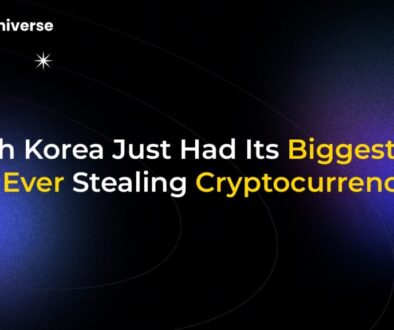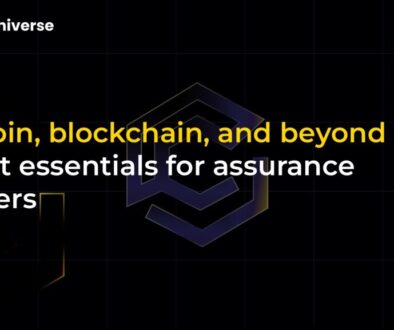Kevin O’Leary: Why AI Can’t Get You Starbucks Without Blockchain

The Future of Your Morning Coffee: AI Orders, Blockchain Pays
Imagine this: You’re running late and simply say to your phone, “Get me my usual tall low-fat latte from the nearest Starbucks.” By the time you arrive, your coffee is waiting, paid for, with your name on the cup. This isn’t a scene from a sci-fi movie; it’s the future of retail as envisioned by Shark Tank investor and venture capitalist Kevin O’Leary.
According to Mr. Wonderful, the powerful duo of Artificial Intelligence (AI) and blockchain is set to spark the “next revolution in business.” In this new era, AI will act as your personal assistant, autonomously handling everyday purchases, while blockchain technology provides the seamless, secure payment rails to make it all happen.
In a recent video, O’Leary painted a vivid picture of this synergy:
“So what happens there is the AI analyzes where you are, looks at the geography of what retailer [is nearby] and determines that that’s the one, and then uses a blockchain to actually do a digital payment system for the tall low-fat latte. It already knows who you are. So the retailer has your name on it when you walk in.”
This vision extends far beyond coffee shops. Think automated grocery orders from Walmart, quick-service meals from your favorite burger joint, or grabbing essentials from Target—all orchestrated by an intelligent agent and settled instantly on-chain.
The Billion-Dollar Bottleneck: Why Current Blockchains Can’t Keep Up
While the concept is revolutionary, O’Leary points out a critical roadblock: scalability. He’s actively searching for a solution but hasn’t found one that can handle the sheer volume of transactions required for mass retail adoption at a low cost.
He specifically calls out established networks like Ethereum. The problem lies in their architecture. Blockchains like Ethereum process transactions linearly, adding them one by one into sequential blocks. During peak times, this creates a traffic jam, leading to significant delays and soaring transaction fees (or “gas fees”). This model is simply not viable for the millions of low-cost, independent transactions that occur every minute in the retail world.
“So we don’t have the technology yet… to do what I just described,” O’Leary admitted, highlighting the massive opportunity for whoever can crack this code.
Beyond the Block: Are DAGs the Answer?
While O’Leary is still searching, potential solutions to this scalability problem already exist. The answer may lie in a different type of distributed ledger technology known as a Directed Acyclic Graph (DAG).
Instead of a single chain of blocks, a DAG processes transactions in a parallel, web-like structure. Think of it like this:
- Traditional Blockchain: A single-lane road where cars (transactions) must wait in line.
- DAG: A multi-lane superhighway where cars can move simultaneously and confirm each other, leading to much faster and cheaper processing.
Cryptocurrency projects like Hedera (HBAR) and Nano (XNO) have already implemented this architecture. While they have yet to achieve the widespread adoption of giants like Ethereum or Solana, their underlying technology is purpose-built to handle the kind of high-throughput, low-cost microtransactions that O’Leary’s vision requires.
Agentic AI Is Already Here, Waiting for its Payment System
The AI side of O’Leary’s equation is developing rapidly. So-called “agentic AI”—intelligent agents that can perform tasks on our behalf—are already becoming a reality.
Kyle Okamoto, CTO of the decentralized platform Aethir, shared a practical example of how his wife uses a custom-built AI agent to streamline their family’s grocery shopping. Her AI agent monitors grocery lists, compares prices across Target, Whole Foods, and Amazon, and sends alerts when items like their kids’ yogurt go on sale at a specific store.
“She doesn’t want to keep checking all these sites for the entire list, so she has the agent do it and give her price alerts,” Okamoto explained.
This real-world application shows that intelligent, task-oriented AI is already here. The only missing piece is the decentralized, scalable, and efficient payment network to complete the transaction autonomously.
The Next Frontier for Business
Kevin O’Leary’s challenge to the tech world is clear. The first project that can build a blockchain capable of handling millions of daily retail transactions for giants like Walmart, Target, and Starbucks will unlock immense value and redefine commerce as we know it.
Ironically, this vision of automated coffee purchases comes from the same investor who, just last year, advised people to save money by making their $5.50 coffees at home. Perhaps the convenience of an AI-powered, blockchain-settled future is an investment even Mr. Wonderful is willing to make.
The race is on. The collision of AI and blockchain is imminent, promising a future that is faster, smarter, and fully on-chain. The only question that remains is: who will build it?


